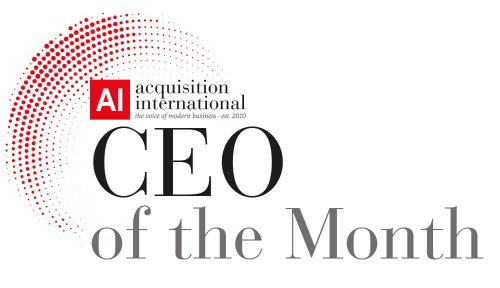

Assurely’s Co-Founder and Chief Insurance Officer, Ty Sagalow shares his views about the role insurance can play to advance digital securities.
Why digital securities?
Following the great ICO craze of 2017 and its correct ultimate fallout, the securities-technology industry has moved on to another acronym, STO. A term many frequently use to characterize digital securities or Securities Token Offerings.
Industry pundits have said that security tokens have the potential to revolutionize capital markets, unlocking greater investor potential. As someone who has been drawn to new markets, revolutionary technology, and innovative industries, I can’t help but to recall many parallels and say, “we’ve seen this story before.” The innovation around security tokens and the prospect of its impact is momentous. It is a fundamental change in how the economy will function; it’s similar to the internet when we built some of the original risk products for that life-changing innovation. If this is true and what the pundits say is correct, we need to understand the nuances of this how technology and financial sector innovation impacts risk.
How did the industry get to his point?
Traditional finance, among other industries, was built on paper. As a young insurance underwriter on Wall Street looking at companies’ financials, I would see stockholders receiving paper certificates as the record of ownership. Eventually, brokerage firms would hold your shares “in street name” indicating the actual owner’s ownership in “book-entry” form, meaning on a computer hard drive somewhere. In 2017, the General Corporation Law of Delaware, the home of more than 50% of all publicly traded companies, was amended to provide statutory authority for Delaware corporations to use blockchain, a type of distributed ledger technology or “DLT,” to create and maintain corporate records, including the corporation’s securities register.
Today, with even more advanced technology available, these same type of ownership shares can be represented by tokens and stored digitally on a blockchain or distributed ledger technology. To validate the technology’s use case, the U.S. SEC released a joint staff statement in 2019, which should help pave the way for more traditional investors to hold digital asset securities. Basically, the technology supporting securitized assets has been updated to reflect today’s highly digitized world. It’s a clear “use case” for this powerful technology – digital securities. This is a very logical step given the evolution of capital markets from trading floors to computers to phones.
What is hindering adoption?
Often the word “new” can trigger uneasiness and fear, especially when it comes to making investments. As an insurance industry veteran, one develops a keen eye for spotting new risks and how to mitigate these risks while helping “new” markets flourish by protecting the companies and individuals eager to participate. Digital securities, (security tokens, tokenized securities or whatever term is driving the rhetoric in the industry at any given time), are a great example of a new risk triggering uncertainty which can be seen as a key factor preventing substantial market growth. On the face of it, digital securities possess several positive attributes – cost reduction, process efficiency, proactive compliance, among other benefits. The democratization of capital is also a seemingly enormous benefit, one that is recognizable from past technological innovations that I have gravitated toward in my career.
Despite the benefits, security tokens carry legal/regulatory, technological, and market risks for investors. While it is fair for the investor to bear market risk, legal/regulatory and technological risk can be managed and at least in significant part, transferred.
Do you think regulation is the answer?
Proper and rational regulation is certainly part of the answer. In the United States, regulators are working hard to clarify what qualifies as a digital security and the steps companies need to take to stay compliant with U.S. securities laws which are designed, at least in theory, to protect investors from dishonest issuers. Technology will also aid the user experience and help to foster trust. However, technology and regulation are not enough.
Beyond regulation and technology, what is missing?
While risk management progress is being made through technology and reasonable regulation, more needs to be done for this modern investment tool to be fully utilized. In my opinion, success for this market and similar emerging markets, require reasonable regulation combined with technology and financial protection. Traditionally, this has been the role of the insurance industry; to combine technology and reasonable regulation with risk transfer products to help society better manage new risks.
How can the insurance industry help?
The insurance industry has been frequently called upon to play a market leading role. In 1974 when Congress created the Employee Retirement Income Security Act, commonly known as ERISA, it created ERISA Fiduciaries with new legal responsibility toward pension plan beneficiaries. The insurance industry immediately stepped in to educate employers about these new fiduciary positions and provided suitable insurance should ERISA fiduciaries make errors in the performance of their functions.
The insurance industry also stepped in when advances in technology created a seismic shift in the economic structure of society. The most notable example is the creation of the internet. In the late 1990s and early 2000s, the internet transformed into an increasingly common tool for communication and commerce. The insurance industry responded with cyber insurance forever making it a partner in the management of denial of service attacks and theft of personally identifiable information (such as credit cards).
In each of these situations, the insurance industry was called upon to provide needed education, risk management services and risk transfer products to help society in its quest for greater economic efficiencies, growth and the building of a trust relationship between its business leader and those for whom they work.
What does this mean for digital securities?
Similar to the emergence of the internet, STOs and digital assets have the capability to transform our economy and society in general. And so today, the insurance industry is being called to play its role to evaluate such risks, educate the population on how best to manage them and create risk transfer products to rationally transfer the risk of buying and selling securities through tokenized and digital assets Those of us who work in the insurance industry, need to do for digital securities what insurance was created to do – advance business and commerce. If we play our intended role, and work together as an industry with securities regulators and market participants, I have no doubt that in five years digital assets, or digital securities or security tokens, or whatever we want to call them today, will be simply called “assets” with no need for an adjective.
About Ty Sagalow
Ty is one of the most respected insurance professionals in the business stemming from a long and storied career at some of the largest and most exciting insurance companies in the world.
At Assurely, in addition to his role as Co-Founder, Mr. Sagalow is responsible for the underwriting and insurance for TigerMark, the company’s management liability insurance policy for crowdfunding and online capital formulation companies including STOs, as well as any other insurance product created by the Company. Ty oversees all underwriting, product development, claims, and legal functions.
Mr. Sagalow is a 36-year veteran of the insurance industry and an expert in new product development in a range of insurance product lines, particularly cyber-insurance, directors & officer’s liability insurance, professional liability insurance, employment practices liability insurance, and reputation insurance. Additionally, with his unique background combining management and professional liability legal, underwriting, and policy drafting, Mr. Sagalow is one of the industry’s most sought-after experts in D&O/E&O coverage disputes.
About Assurely
Assurely is an InsurTech that creates and then distributes insurance products for changing industries.
Assurely brings a data-first approach to helping companies understand insurance. We have the unique ability to understand and price both existing risks and the new risks of a changing economy. Buying insurance needs to be easy, transparent, and simple. With Assurely, companies can enjoy all the benefits of insurance – trust, safety, protection and confidence – without having to go through the painful buying process ever again. You simply get what you need, when you need it, and only what you need. It’s the next generation of insurance.




















